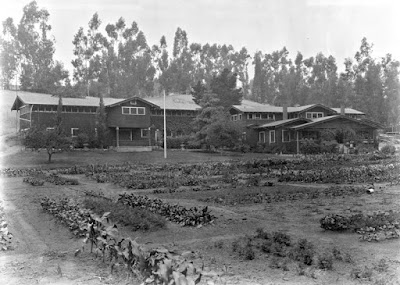 |
| Senaida Sullivan, 1965 |
More than twenty five years after Silverwood's death, Senaida Sullivan, state music chairman of the Native Daughters of the Golden West, with support from her organization and the Al Malaikah Shrine, led the lobby to have "I Love You, California" made the official state song. Many other state songs had been posited over the years, but none of the others had staying power. Senator Jack Tenney and Assemblyman Frank Lanterman (who loved playing the song on pipe organ) made the case to the California State Legislature. In 1951, their resolution passed. However, equivocating politicians had reworded the language to make "I Love You, California" “an” official state song, but not “the” official state song, leaving room for future waffling.
 |
| Silverwoods president Stephen C. Bilheimer (right) cuts ribbon at first Orange County store, at the Broadway Center on Euclid Ave. Anaheim, April 5, 1957. |
In 1987, to honor the memory of Frank Lanterman, (but because the song was falling out of copyright the following year), freshman Assemblyman Tim Leslie proposed a bill to unequivocally make “I Love You, California” THE state song. The idea was not universally loved. “I can't believe we're doing this,” said Assemblyman Dave Elder. “It might've sounded great on Frank Lanterman's organ after about four drinks -- if you had them, not him.” Assemblywoman Jackie Speier flat-out called it “a terrible song.”
 |
| Frank D. Lanterman at the organ. |
Silverwood’s chain of stores grew along with Southern California, added women’s professional apparel to their repertoire, moved their headquarters to Santa Ana, and became part of the family of Hartmarx Specialty Stores. They closed after the 1991 Christmas season due to slumping sales.
 |
| Silverwoods (on left) at Fashion Island, Newport Beach, circa late 1970s. |
Just Tell Him Now
If with pleasure you are viewing any work a man is doing,
If you like him or you love him, tell him now;
Don't withhold your approbation till the parson makes oration,
And he lies with snowing lilies o'er his brow;
For no matter how you shout it, he won't really care about it,
He won't know how many teardrops you have shed.
If you think some praise is due him,
Now's the time to slip it to him,
For he cannot read his tombstone when he's dead.
More than fame and more than money,
Is the comment, kind and sunny,
And the hearty, warm approval of a friend;
For it gives to life a savor, makes you richer, stronger, braver--
Gives you heart and hope and courage to the end.
If he earns your praise, bestow it;
If you like him, let him know it;
Let the word of true encouragement be said.
Do not wait till life is over and he's underneath the clover,
For he cannot read his tombstone when he's dead.
Indeed, Daddy Silverwood isn’t reading many tombstones (or blogs) these days, either. But we Californians really should return his love by at least remembering him and by singing our state song.
 |
| Francis B. "Daddy" Silverwood, 1920. |






























